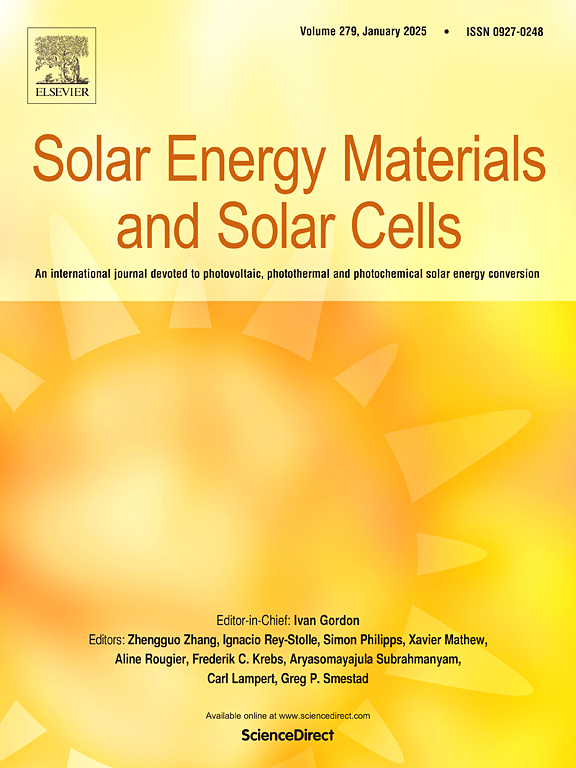Experimental comparison and 6E analyses of double-ended evacuated tube collector based atmospheric water harvesting with and without PCM
IF 6.3
2区 材料科学
Q2 ENERGY & FUELS
引用次数: 0
Abstract
Globally, there is scarcity of fresh water resources, and existing water harvesting systems face various limitations, including the inability to operate at night, requiring high desorption temperature, and yielding limited amount of water. To tackle these challenges, a novel atmospheric water harvesting system is developed and compared experimentally with and without the use of phase change material (PCM). To generate hot air, the system consists of a 4.86 m2 double-ended evacuated tube collector solar air heater and integrates an independent air-cooled condenser for vapor condensation. The system's performance is evaluated through 6E analyses of energy, exergy, environmental, economic, exergo-economic, and enviro-economic factors using silica gel and molecular sieve desiccants. The PCM-encapsulated system with silica gel reports peak thermal, overall and exergy efficiency of 30.06 %, 9.71 %, and 7.98 %, respectively, with maximum fresh water yield of 4.25 L/day at a cost of 0.11 $/L. Whereas, the system without PCM outperforms with molecular sieve having same parameters of 18.27 %, 10.21 %, and 2.84 %, respectively, with maximum fresh water yield of 4.40 L/day at a cost of 0.092 $/L. The PCM-encapsulated system using silica gel is eco-friendly by mitigating 37.31 tons of at a sustainability index of 1.09, while the system using molecular sieve without PCM is eco-friendly by mitigating 34.23 tons of at a sustainability index of 1.03. Further, the harvested water from both the designed systems reports to be safe for domestic and commercial use.
带与不带PCM的双端真空管集水机大气集水的实验比较与6E分析
在全球范围内,淡水资源稀缺,现有的集水系统面临各种限制,包括无法在夜间运行,需要高解吸温度,以及产生有限的水量。为了应对这些挑战,开发了一种新型的大气集水系统,并对使用相变材料(PCM)和不使用相变材料(PCM)进行了实验比较。为了产生热空气,该系统由一个4.86 m2的双端真空管集热器太阳能空气加热器和一个独立的风冷冷凝器组成,用于蒸汽冷凝。通过使用硅胶和分子筛干燥剂对能源、能源、环境、经济、能源经济和环境经济因素进行6E分析,对系统的性能进行了评估。用硅胶封装的pcm系统的峰值热效率、总效率和㶲效率分别为30.06%、9.71%和7.98%,最大淡水产量为4.25 L/天,成本为0.11美元/升。而不加PCM的系统优于有分子筛的系统,其参数相同,分别为18.27%、10.21%和2.84%,最大淡水产量为4.40 L/d,成本为0.092美元/L。使用硅胶封装PCM的系统减少了37.31吨的CO₂,可持续指数为1.09,而使用分子筛不使用PCM的系统减少了34.23吨CO₂,可持续指数为1.03,是环保型的。此外,从两个设计系统收集的水报告是安全的,可用于家庭和商业用途。
本文章由计算机程序翻译,如有差异,请以英文原文为准。
求助全文
约1分钟内获得全文
求助全文
来源期刊

Solar Energy Materials and Solar Cells
工程技术-材料科学:综合
CiteScore
12.60
自引率
11.60%
发文量
513
审稿时长
47 days
期刊介绍:
Solar Energy Materials & Solar Cells is intended as a vehicle for the dissemination of research results on materials science and technology related to photovoltaic, photothermal and photoelectrochemical solar energy conversion. Materials science is taken in the broadest possible sense and encompasses physics, chemistry, optics, materials fabrication and analysis for all types of materials.
 求助内容:
求助内容: 应助结果提醒方式:
应助结果提醒方式:


